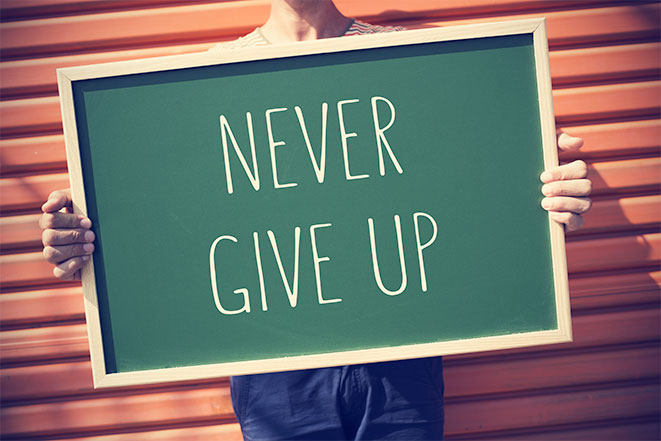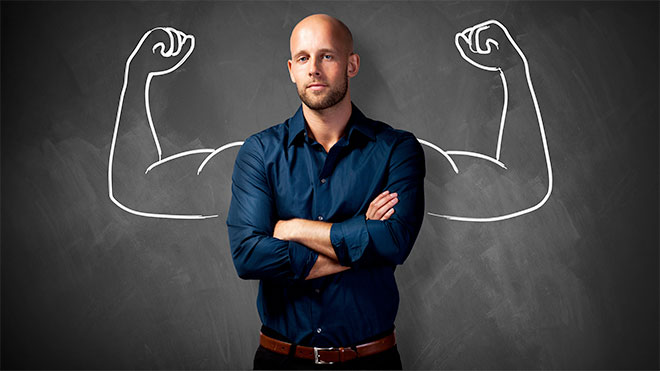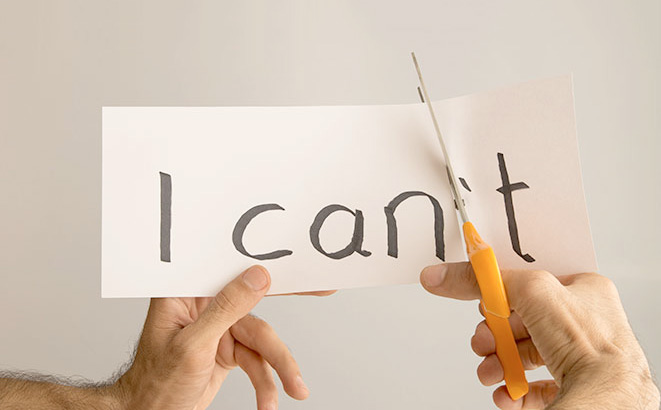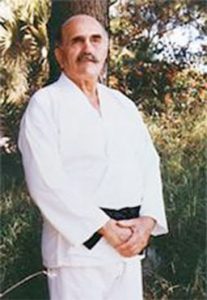KRAV MAGA
Presentation
Krav Maga means “Close combat” in Hebrew. Krav Maga is an easy and efficient self-defense system created in the 1930s by Imi Lichtenfeld. Its guiding principles are: simplicity, efficiency, speed and self-control. This system was developed for the Israeli military and is based on natural reflexes. It was then adopted by numerous police forces and elite units such as the NGIG, the FBI and the SWAT. You can see Krav Maga in action in popular TV series such as NCIS and 24, or in movies such as Enough starring Jennifer Lopez and the Bourne saga.
Krav Maga Principes
Krav-Maga consists of two parts :
–Self-defense,which is the essential framework. This is made up of a variety of techniques which aim to enable those have been begun training to defend themselves against an attack, to avoid being injured and to finish-off an assailant. It includes responses to a wide variety of attacks, armed or unarmed and from various positions: upright, seated, lying down…
– Hand-to-hand combat ; which constitutes a more advanced phase of Krav Maga; here one is taught ways in which to neutralize an opponent quickly and effectively. It includes elements which are, strictly speaking, more concerned with actual fighting: tactics, feints, various attack combinations, the psychological dimension of combat… and the training exercises reinforce its spirit and develop the ability to manage violent confrontations whilst in a state of stress..


Krav Maga is not just another school of martial arts, based on conventional approaches. It is above all concerned with a modern methodology of self-defense characterized by a coherent and logical approach allowing natural, practical and easy techniques, based on relatively simple movements of the human body. This discipline’s concern with realism does not therefore permit rules, limits or its use in sporting events.
Krav Maga grew out of an environment in which violence, particularly of an ideological or political nature, was commonplace. It was consequently tested, studied and refined and has demonstrated itself to be a comprehensive method of self-defense when faced with critical danger.
The search for effectiveness
In Krav Maga we believe that simplicity is a determining factor in safeguarding one’s chances of survival when faced with physical aggression. Simple movements are short and consequently less tiring. There are two good reason for simple movements: they constitute the most effective way of preserving one’s physical stamina during a fight, and a simple movement, being short has less distance to cover, and is thus inevitably faster.


In spite of the absence of limitations in Krav Maga, we obviously abide by all the necessary safety regulations to ensure that students can improve their level of practice in a secure environment. We must also however, ensure that no movement, nor any attack, is foreign to us. Aesthetics are of no concern to us; our priority is effectiveness. Our concern is to avoid any false teaching, and to prioritize instead a culture of effectiveness which we will be able to use in moments of absolute necessity. First of all we will make every effort to remain alive and, if necessary to kill in order not to be killed. Secondly, we will try to be sufficiently effective to exercise the self-control necessary not to have to kill or to cause irreparable damage. This is the point at which Krav Maga becomes an art form.
The Branches of Krav Maga
As many martial arts unfortunately, different schools of Krav-Maga appeared even before the death of the founder, Imi Lichtenfeld. Theses branches were created by recognized instructors who all worked with Imi and who are or were excellent but with a point a view different regarding to their personnality. The very first instructors were Eli Avikzar, Raphy Elgrissi et Haim Zut.
Eli Avikzar was Eyal Yanilov’s, Haïm Giddeon’s, Kobi Lichtenstein’s and Richard Douïeb’s teacher. Richard Douïeb also worked with Raphy Elgrissi and Haïm Zut. These 4 persons were also Imi’s students.
Nowadays, 5 main organizations exist: FEKM, IKMA, IKMF, WKMF and Federaçao Sul Americana de Krav-Maga. ” (Source: F.E.K.M)
For more information, please consult the F.E.K.M website : www.krav-maga.net
 Imi Lichtenfeld, was born in 1910 in Bratislava, in Czechoslovakia. Inspired and encouraged by his father Samuel, a former circus acrobat and prize-fighter, teacher of physical education, police detective and chief instructor of the Local Police who was reputed for his self-defence instruction and for his impressive arrest record, Imi practised many sports. He finally specialised in gymnastics, wrestling and boxing, and for ten years took part in many competitions, which he frequently won, mainly as a wrestler.
Imi Lichtenfeld, was born in 1910 in Bratislava, in Czechoslovakia. Inspired and encouraged by his father Samuel, a former circus acrobat and prize-fighter, teacher of physical education, police detective and chief instructor of the Local Police who was reputed for his self-defence instruction and for his impressive arrest record, Imi practised many sports. He finally specialised in gymnastics, wrestling and boxing, and for ten years took part in many competitions, which he frequently won, mainly as a wrestler.
In 1928 Imi won the championship for free-style wrestling for the youth of Slovakia.
In 1929 he won the same championship for free-style wrestling but for adults and in two categories of different weights, as well as the national boxing championship plus an international gymnastic competition.
In 1935 : a rib broken during training just before a competition in Palestine kept him from competing ; from this event he drew a lesson concerning the question of safety while practice, contrary to the belief that you must win at all price : « first of all, avoid being wounded …. »…..
From 1936 to 1940 Imi practised mainly wrestling. He trained, practised and won a dozen medals and prizes. He was considered one of the best wrestlers in Europe. Simultaneously, he practised acrobatics and devoted himself also to dramatic art. He taught gymnastics to one of the best theatre companies in Czechoslovakia and acted in various productions.
During this period, Imi took part in numerous oppositions and street fights against anti-semitic agressors, either alone or in a group. With the rise of fascism and anti-semitism, the nazis spread over Slovakia and the Jews were violently attacked ; Imi organised a group of young Jews mainly from boxing, wrestling or physical culture clubs to counter these attacks and to stop the gangs of anti-semites invading the Jewish neighbourhood.
These incidents forged the spirit and body of Imi and transformed him from sportsman to accomplished street-fighter with a unique experience which planted the seed which was later to become the system of self-défense he initiated – the Krav-Maga.
The bases of his self defense were :
- Use reflexes and natural movement;
- Simultaneous attack and defense;
- Recuperate after an assault.
In 1940 Imi had become a problem for the local authorities now fascist and he was obliged to leave his home, his family and his friends. He embarked on the last immigrant ship which managed to escape the nazis. It was an old river boat named the Pentcho and was converted into a transport ship for hundreds of refugees fleeing central Europe for the promised land of Israël (Palestine).
The odyssey of Imi on board this ship is full of emotional episodes and lasted two years.
In the Roumanian delta the ship was placed in quarantine to try and starve the passengers. Several times Imi was obliged to dive into the water, in peril of his life, to save passengers fallen overboard or to recover bags of food, While saving a child from drowning, he caught an ear infection which almost cost him his life.
The boat was saved from being destroyed by mines because if was flat bottomed.
Later, the boiler of the ship exploded and it ran aground near the Greek island of Kamilanisi. Imi and four of his friends took a rowing boat aiming for Crete to ask for help. Ignoring his ear infection and the arguments of his friends, Imi refused to give up the oars for an entire day. But despite their heroic efforts, violent winds capsized the boat and they never accosted Crete. On the morning of the 5th day, a British warship picked up the five survivors and took them to Alexandria in Egypt.
Imi was in very bad shape and underwent several operations in hospital. At this point he was at death’s door and the doctors gave him no hope of recovery. However, the surgeon managed to save his life. After his convalescence, Imi joint the Czechoslovakian legion under the command of the British Army. He served in different places in the Middle East for a year and a half before finally receiving permission to enter Israël (Palestine).
In 1942 friends of Imi introduced him to General SADEH, general of the Hagana (pre – IDF = Israeli Defensive Forces) who immediately accepted him in the organization because of his knowledge of close combat.
In 1944 Imi began training Israeli fighters. He trained various top regiments of the Hagana : Palmach (fighting regiments), Palyam (marine commandos) as well as officers of the police force. He taught them the physical condition necessary to fight, how to overcome individual obstacles, bayonet techniques, how to attack guards, close combat without weapons (Krav-Maga in Hebrew), swimming, knife attacks, pole fighting techniques.
In 1948 with the birth of Israel and the IDF, Imi became Chief Instructor in physical education and Krav-Maga for the Army. He served with the IDF for 20 years perfecting and developing his method of unique close combat. Imi personally trained the best members of Israel’s elite regiments and formed many generations of instructors in Krav-Maga. For this he received recognition from the highest grades in the Army.
Later, the Minister of Education gave state endorsement for the teaching of Krav-Maga in civil society.
The Krav-Maga was an answer to the various needs of the IDF. It had to be easy to learn and apply, in such a way that a soldier, an office worker or a member of an elite regiment could become efficient in a short period of time and also that the techniques could be applied in spite of intense stress.
At the beginning of the sixties while training a regiment of the Royal Police in Ethiopia, Imi became aware that one of his pupils was really trying to hurt him while he was teaching a method of defense against a bayonet attack. At the next move, Imi struck very forcibly and in such a way that the pupil had to submit. This incident made him reflect more on the attitude he had to convey to his pupils in order to train in good conditions and avoid being hurt : « Do not try to prove who you are ».
In 1964, after retiring from the IDF, Imi began to adapt the Krav-Maga for the needs of a civilian society. The method was adapted to fit everyone : men and women, young and old, everyone who at one point would need to survive an attack with a minimum of risk and damage. To spread his method, Imi opened 2 training centres in Tel Aviv and Netanya, his home town, which become the centre for anyone practicing Krav-Maga. He adopted the belt system in order to structure his discipline and to assure quick progress in total security.
Meanwhile, Imi continued to act as consultant and instructor of Krav-Maga pour the IDF and other security forces.
In 1972, the first instructor formation for non-military people began at the Institute Wingate. From then on the method spread to many civilian societies. Since then, thousands of people from all walks of life have trained in Krav-Maga : Israeli Secret Service, Police Force, schools, private and public institutions, especially since it has been endorsed by the Israeli Ministery of Education.
In 1978, Imi founded the Israeli Krav-Maga Association to spread the method and transmit its values. He remained president until his death.
In 1981, the Krav-Maga began to be known throughout the world.
Up until his death, Imi continued to develop the technique and conceptions of Krav-Maga. He controlled not only its progress but the success of its pupils, captivating them with his unique personality and his pronounced sense of humour in communicating his knowledge and advice.
On the 8th of January 1998 Imi died at the age of 87 retaining a strong mind even in his last moments.
Imi’s Principles
The essence of Krav-Maga rests on several principles:
First a somewhat generic principle, i.e., prevention – to avoid being in dangerous situations. For example when hitch-hiking, to avoid unwholesome individuals; when walking, to avoid dangerous neighbourhoods.
Second : Krav-Maga is based on the human body’s natural reflexes.
Third : Starting from whichever position one is, in to defend and attack along the shortest distance and to favour methods which involve minimum personal risk.
Fourth : To attempt to discourage one’s opponent verbally bearing in mind the actual situation, its requirements and the danger presented.
Fifth : to attack the weak areas of the human body (the eyes, the throat) in order to strike or to subdue one’s opponent;
Sixth : to try to use any object within one’s reach as well as the body’s natural weapons;
Seventh : the most realistic principle: no holds barred, no boundaries as to the techniques employed, nothing is forbidden, all strikes are legitimate.”
“To master self-defence so well as to never have to kill anyone.”
Karate Bushido n°195 – October, 1992
Tribute to Imi Lichtenfeld
Imi Lichtenfeld died on January 08, 1998. Krav-Maga was henceforth bereft of his creator. The task of continuing its teaching, its development and especially of perpetrating the spirit of his founder now falls to us. ” (Source: F.E.K.M)
For more information, please consult F.E.K.M website : www.krav-maga.net
Born in Jerusalem in 1956, Richard Douieb came back to France and stayed till he was 16. He returned to Israël where he started martial arts.
In the army, at the age of 17, he discovered krav-maga. He passed his military diploma of krav-maga with Imi LICHTENFELD.
At 23 years old he returned to France. He practised several disciplines: Atemi-ju-jitsu, Thai Boxing, American Boxing and became Champion de France in 1983.
Finally, he decided to devote himself to krav-maga after successfully passing his diploma of Krav-Maga Instructor in Israël in 1987.
Krav-Maga became well-known in France when he started as GIGN self-defense Instructor in 1993. He remained in this function till 2005.
CV
From 1970 to 1973 : Gymnastique after 6 years of swimming.- Boxe.
From 1973 to 1974 : One year of Karate and Krav Maga in a Kibboutz in Israël.
From 1974 to 1976 : Soldier in an elite regiment in the israelian army. Military Diploma of Krav Maga.
From 1976 to 1977 : Demobilization because of a wound. One year of convalescence.
From 1977 to 1980 : Practising Krav-Maga daily and studying at Wingate Institute for Physical Education and Sport. Diplomas of General sport Instructor, Black belt in Krav-Maga .
1980 : Return to France. Learning judo, ju-jitsu, “savate”, american and thaïe boxing..
1982 : Black belt in ju-jitsu and american boxing. Second dan in Krav Maga in Israël.
From 1983 to 1986 : American Boxing French Champion. Boxe teacher in Argenteuil (France). Several stays in Israël for training. Third dan in Krav Maga.
1987 : Krav-Maga Instructor Diploma passed at Wingate Institute. Back to France and creation of the 1st krav-maga school in France. Official representative of Krav-Maga in Europe.
1990 : Several stays in Israël. Fourth dan of Krav Maga.- Beginning regular training courses in Switzerland.
1993 : 1st year as official instructor for GIGN. 2 courses per week.
1994 : Starting the instruction of the direction of Police and Sports in Lausanne.
1995 : Fifth dan in Krav-Maga.- Starting regular training courses in the polish army.
2007 : Sixth dan in Krav-Maga with the French Federation of Karate.
Richard Douieb teaches Krav-Maga in France and Europe since 1987. He is the official representative in Europe of Imi LICHTENFELD, the founder. ” (Source: F.E.K.M)
For more information, please consult the F.E.K.M website: www.krav-maga.net


